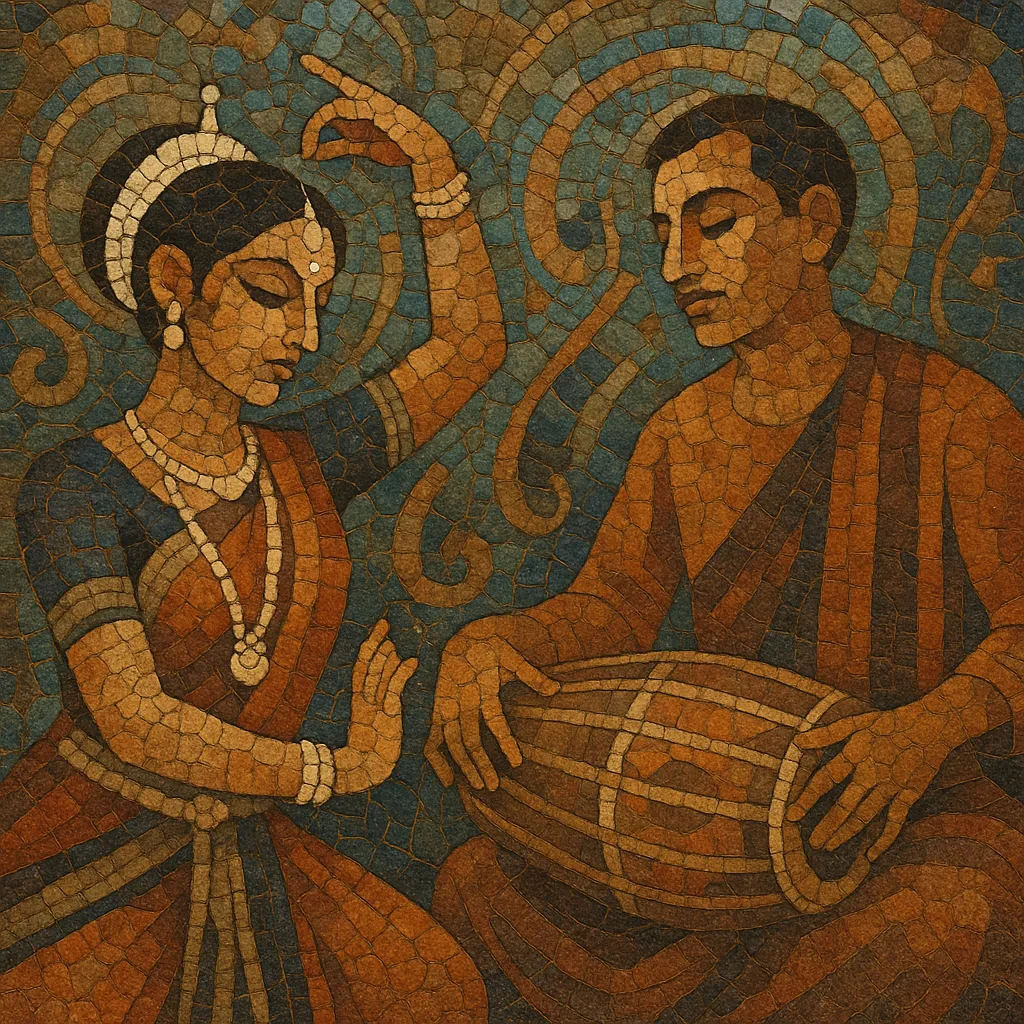Odissi classical (often called Odissi music or Udra Paddhati) is a temple-born classical music tradition of the Indian state of Odisha.
It is closely allied to the Odissi classical dance and to devotional poetry such as Jayadeva’s Gita Govinda, combining refined raga–tala grammar with a distinct Odia aesthetic of bhava (expressive affect).
The style features its own raga families and tala cycles, an ornate approach to microtonal ornamentation (gamakas), and the mardala drum’s intricate rhythmic language.
Sung primarily in Sanskrit and Odia, Odissi classical balances lyrical devotion with rigorous melodic and rhythmic architecture, making it both contemplative and sensuously expressive.
Odissi classical emerges from temple liturgy and court culture in historical Kalinga (present-day Odisha). Jayadeva’s 12th-century Gita Govinda—and its performance as ashtapadis in the Jagannath temple tradition—became a foundational devotional and musical source. Early forms assimilated pan-Indic prabandha practices and a raga–tala grammar shared with broader Indian classical lineages while retaining regional melodic types and temple rhythms.
Across the medieval and early modern periods, Odissi music matured within temple (seva) services, mahari and gotipua dance traditions, and princely courts. Distinct Odia poetic forms—chhanda, champu, bhajan, and janana—were codified musically. A characteristic palette of ragas (e.g., Kedar Kamodi, Baradi, Abhiri, Dhanasri, Sri, Nata) and talas (e.g., Jhampa, Ekatali, Tripata, Khemta, Rupaka) took shape alongside the signature mardala percussion idiom.
Colonial disruptions and changing patronage systems attenuated temple-based transmission. From the mid-20th century, scholars, gurus, and performers documented, taught, and staged Odissi music anew—often in tandem with the revival of Odissi dance. Recording technologies, music conferences, and conservatories in Odisha standardized pedagogy while preserving improvisational and regional nuances.
Today, Odissi classical thrives in concert halls, dance accompaniment, and academic programs. Artists publish notations, raga–tala treatises, and archival recordings, and collaborate in cross-genre settings. While rooted in devotional lyricism and temple aesthetics, the style continues to evolve through research, pedagogy, and careful fusion projects that retain Odissi’s raga–tala identity and mardala-centric rhythm.


